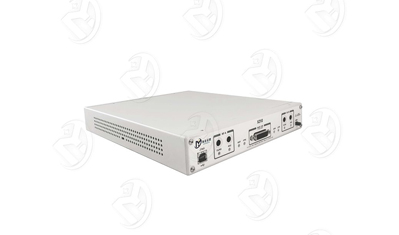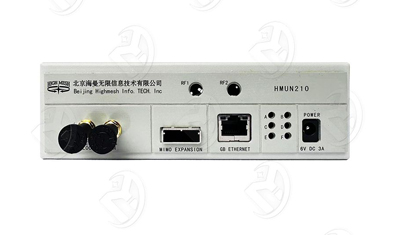The USRP GNU Radio Tutorials serve as a comprehensive resource for individuals interested in exploring software-defined radio (SDR) and signal processing applications. Developed as part of the collaboration between the USRP (Universal Software Radio Peripheral) hardware platform and GNU Radio, an open-source software toolkit, these tutorials offer a structured approach to understanding and utilizing radio communications technology effectively. The tutorials begin with foundational concepts in radio frequency systems, guiding beginners through the essentials of SDR.
As users progress, they delve into advanced topics such as modulation techniques, digital signal processing, and real-time signal analysis. Each tutorial is meticulously crafted, combining theoretical knowledge with practical implementation exercises, ensuring that learners build both competence and confidence in their abilities. These resources are designed to cater to a wide audience, including students, researchers, and engineers, all seeking to harness the capabilities of SDR for various applications. Whether the goal is to design a custom communication system, engage in signal intelligence, or develop educational projects, the tutorials provide ample opportunities for hands-on experience with real-world scenarios.
Additionally, the integration of USRP hardware allows users to experiment with high-fidelity signals across different frequency ranges, making the learning process both engaging and relevant. Expert contributors, with years of experience in SDR and communications engineering, have developed these tutorials. Their authority on the subject matter is reflected in the rigor and clarity of content, which is regularly updated to incorporate the latest advancements in technology and practices. The tutorials also foster a strong community of learners and professionals, encouraging collaboration and knowledge sharing through forums and events. Moreover, proper engagement with these tutorials equips users with a solid understanding of regulatory aspects, ethical considerations in communications, and the importance of open-source development in democratizing access to advanced technologies.
As the field of SDR continues to evolve, the USRP GNU Radio Tutorials remain an invaluable repository of knowledge, empowering individuals to innovate and contribute to the future of radio communications. In summary, the USRP GNU Radio Tutorials are not just a set of instructional materials; they represent a pathway to mastering an increasingly significant area of technology. By combining expertise, practical experience, and authoritative insights, these resources stand as a beacon for those eager to explore the vast potential of software-defined radio.
Tutorial directory overview and learning path
GNURadio official Wiki provides systematic tutorials, from zero foundation to developer level step by step:
1. Beginner module
Understand GNURadio, installation process, GRC first flowgraph
Understand variables, data types, streams and vectors, runtime update mechanism
2. Intermediate and advanced applications
Custom Python modules, message passing, tags
Use DSP modules (low-pass filtering, frequency offset, rate conversion)
Realize modulation and demodulation (FM, SSB, QPSK, BPSK, OFDM, FSK)
3. Hardware combined with actual combat
RTL-SDR and USRP B200/B205 actual combat exercises
Design software spectrum analyzer, FM transceiver
Establish file transfer, packet communication system, etc.
4. Developer orientation
Create Out-Of-Tree module (Python/C++)
Use VOLK acceleration core
Link development with IDE (VS, Eclipse, Code::Blocks), remote control test
You can complete the basic module first, and then combine it with USRP Hardware practice, master the construction and optimization of SDR system step by step.
How to practice these tutorials efficiently
Step 1: Environment and dependency preparation
Install UHD driver and GNURadio, Linux Ubuntu / Fedora environment is recommended
Configure USB/Ethernet link to ensure normal device recognition
Step 2: Hardware connection and basic verification
Use the "Software Spectrum Analyzer" example to check the signal reception function
Adjust AGC (Automatic Gain Control) to avoid signal loss
Step 3: Transition from receiver to transmitter
Implement FM reception, then refer to the FM transmission tutorial example
Pay attention to sampling rate interpolation, host load and USRP buffer underrun issues
Step 4: Custom extension module development
Learn Python custom modules and message mechanisms
Master custom OOT modules or FPGA acceleration technology
Step 5: Test, deploy, and optimize
Apply to actual scenarios, such as IoT gateways, signal intelligence, and edge deployment
High mesh can provide hardware customization and subsequent technical service support
Advantages of Highmesh USRP
Rich USRP product line, supporting teaching materials and support
Covering B200/B210, X310, UN200/UN210 and other series, wide frequency band, high bandwidth, hard FPGA scalability
Each hardware is equipped with complete documentation, tutorials and official examples, greatly reducing the cost of trial and error
Professional B2B support system
Highly available supply chain guarantees delivery
Provide customized RF performance and surface treatment solutions
The technical support team provides full-process services such as installation and debugging, integration guidance, and firmware upgrades
Industry-oriented solutions
Support SIGINT, radar, IoT, edge computing and other scenarios
Tailored for procurement teams: performance-cost balance, compatible with a wide range of SDR platforms
You only need to focus on industry applications and algorithm innovations, Highmesh USRP provides hardware and service guarantees to help you implement your project.




